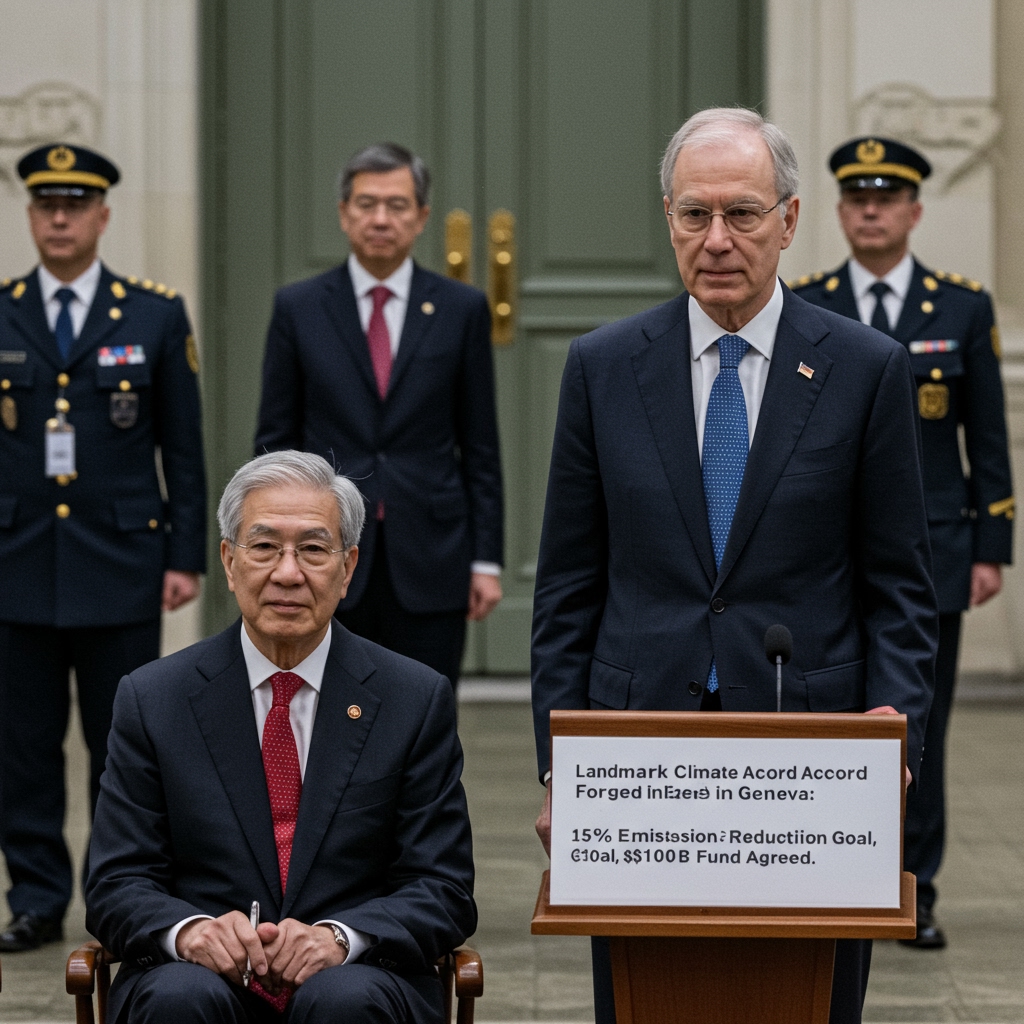Provisional Climate Accord Struck in Geneva, Signaling Path Forward on Global Emissions and Finance
Geneva, Switzerland – Following intense, high-stakes negotiations that commenced on April 23, leaders from the G7 nations and representatives from the United Nations on April 25, 2025, announced a provisional agreement on global climate action. The breakthrough accord, forged during a critical summit in Geneva, marks a significant step towards international cooperation on tackling the climate crisis, resolving key sticking points that have hampered progress in recent years.
The core of the provisional agreement includes a collective commitment among participating nations to aim for a 15% reduction in global carbon emissions by 2035. This target, while ambitious, represents a negotiated consensus intended to accelerate the pace of decarbonization necessary to avert the most catastrophic impacts of climate change. Achieving this collective goal will require substantial policy shifts, technological advancements, and international collaboration across diverse economies.
A pivotal element that proved central to unlocking the agreement was the resolution of long-standing disagreements surrounding climate finance for developing countries. Developed nations participating in the talks pledged to establish a proposed $100 billion fund specifically earmarked to support clean energy transitions in developing countries. This financial mechanism is designed to assist these nations in adopting renewable energy sources, improving energy efficiency, and building climate resilience, thereby enabling them to pursue low-carbon development pathways without hindering economic growth. Officials acknowledged that establishing this fund resolved a major point of contention that had complicated previous international climate negotiations.
The Geneva summit negotiations, which began on April 23, were described by insiders as exceptionally challenging, with delegates working around the clock to bridge divides, particularly on the issues of burden-sharing for emission cuts and the scale and mechanism of financial support for vulnerable economies. The presence and active participation of officials from the U.S., EU, and China were widely seen as crucial to the successful outcome. These major global players were central to the discussions, engaging in detailed and often difficult talks to find common ground.
Upon the announcement on April 25, 2025, officials from these key delegations were quick to hail the provisional agreement as a breakthrough and a crucial step. They emphasized that while the accord represents a significant political commitment and provides a framework, it is explicitly provisional. This means that further details and technical specifications still need to be ironed out and finalized.
The path forward requires intensive follow-up work. The provisional nature of the accord means that national delegations, supported by UN frameworks, must now engage in detailed discussions to translate the broad commitments into concrete action plans, verifiable metrics, and operational guidelines for the proposed $100 billion fund. These complex details include defining how the 15% collective reduction will be achieved and measured among diverse nations, establishing transparent governance mechanisms for the fund, and determining the criteria for allocating resources to developing countries. Officials stressed that finalization of these essential details is targeted by year-end.
Experts monitoring the negotiations praised the diplomatic efforts in Geneva, noting that any agreement involving a significant collective emission reduction target and a substantial financial commitment represents progress in the often-stagnant landscape of global climate politics. The $100 billion fund, if fully established and effectively deployed, could significantly accelerate the deployment of clean technologies and infrastructure in parts of the world that are most vulnerable to climate change impacts and often lack the domestic resources for a rapid transition.
However, environmental advocacy groups offered a mixed reaction, acknowledging the positive step while also highlighting the need for greater ambition. While welcoming the provisional agreement and the commitment to finance, some groups argued that a 15% reduction by 2035 might not be aggressive enough to align with the urgency highlighted by climate science, which often calls for steeper cuts in emissions to limit global warming to internationally agreed-upon thresholds.
Despite these differing perspectives on the level of ambition, the agreement reached in Geneva on April 25, 2025, undeniable represents a renewed sense of multilateral commitment to climate action. The involvement of G7 nations, UN representatives, and particularly the constructive engagement of the U.S., EU, and China, signals a shared recognition of the global nature of the climate challenge and the necessity of coordinated international responses.
As the process moves towards finalization by year-end, the focus will shift from high-level political agreement to technical implementation and securing the necessary national commitments to turn this provisional accord into a durable and effective framework for global climate action.





